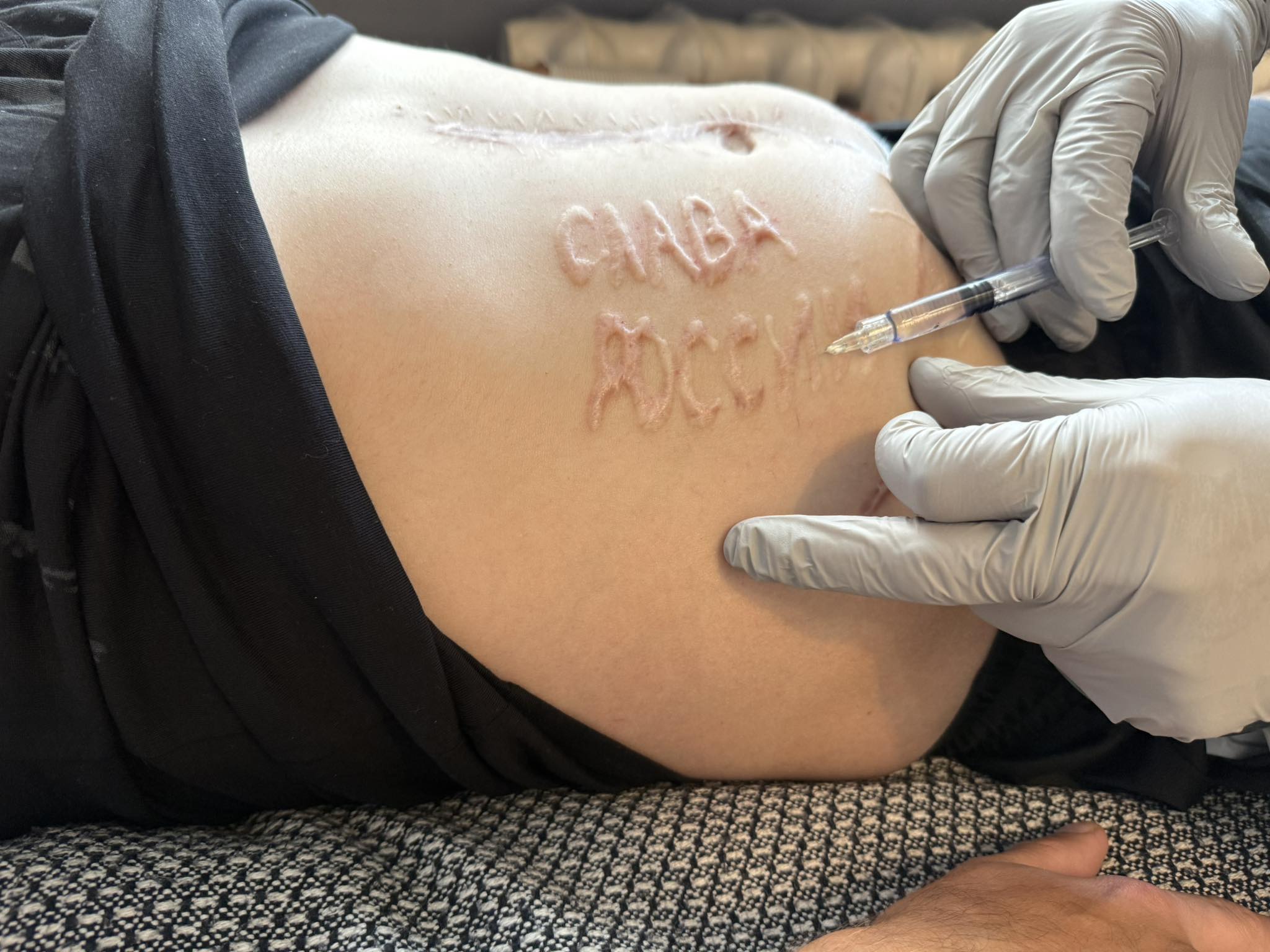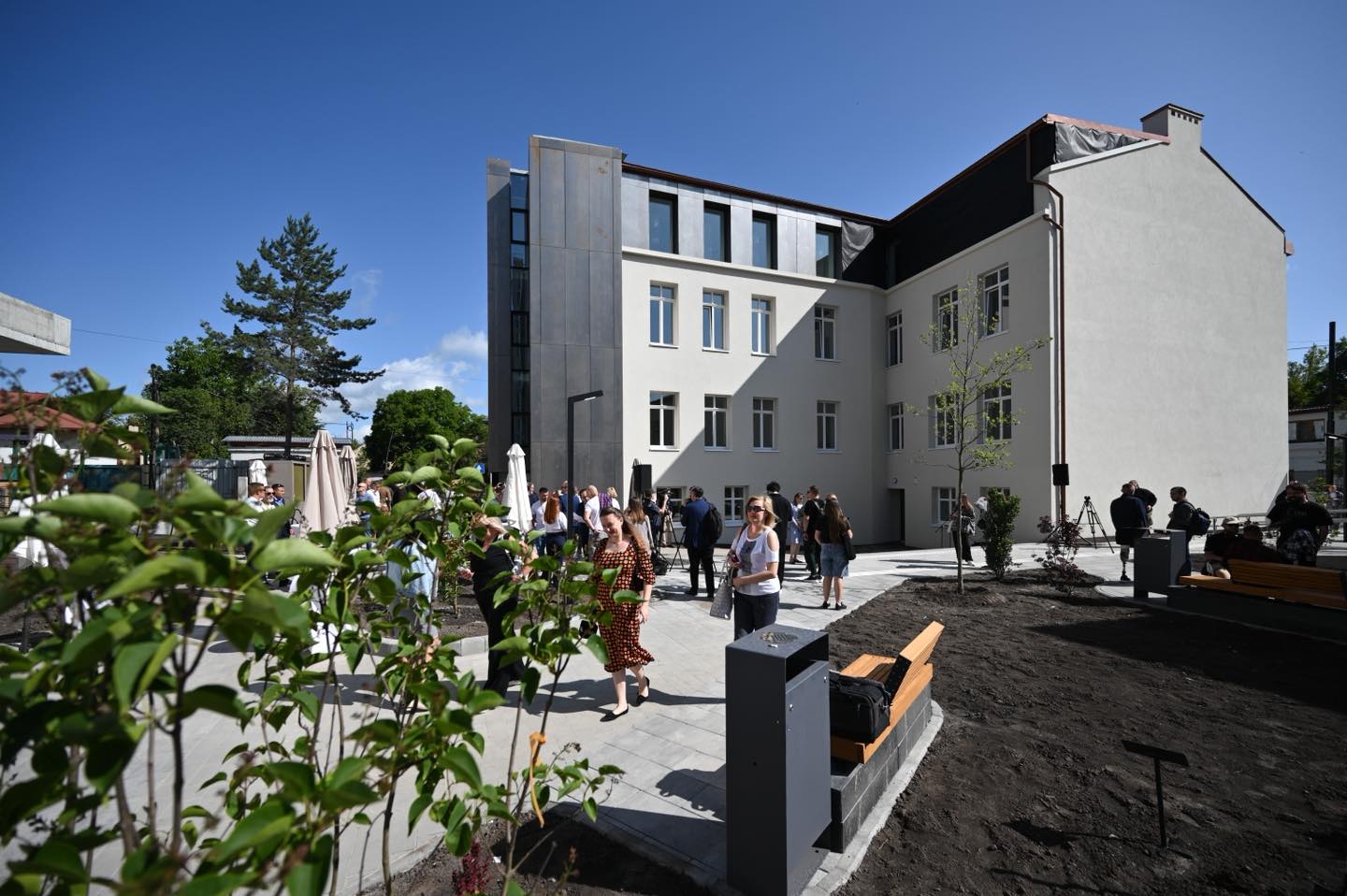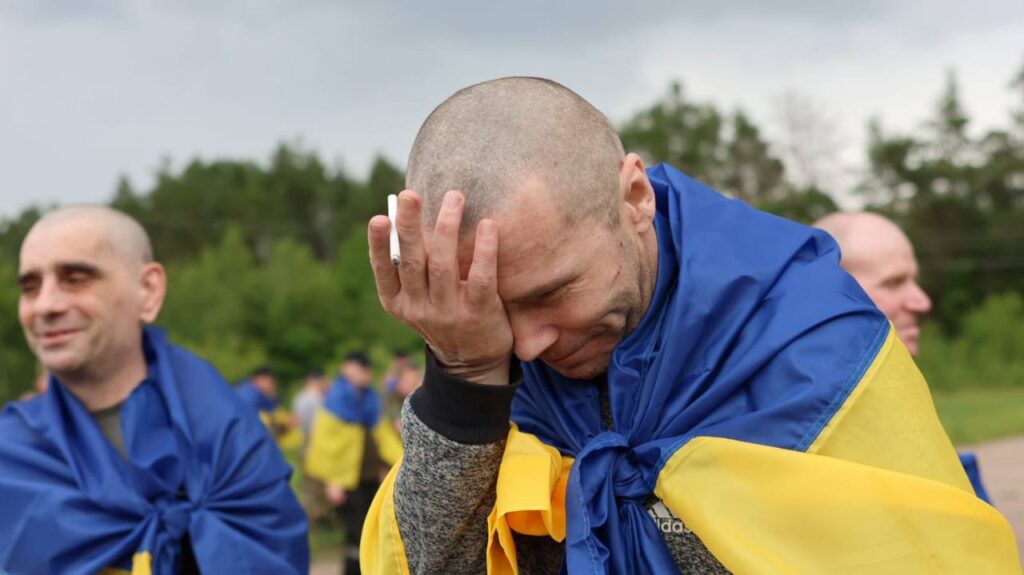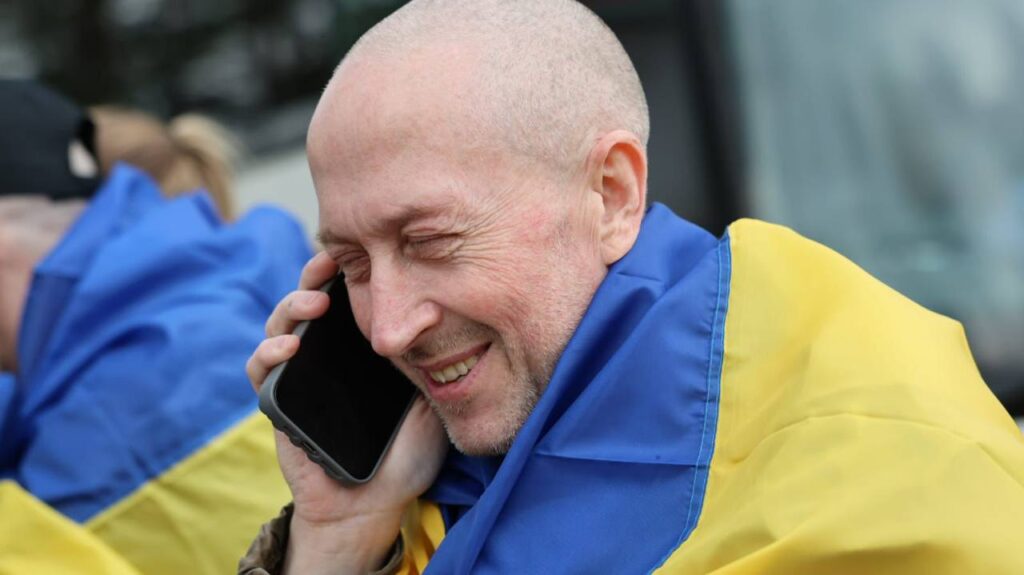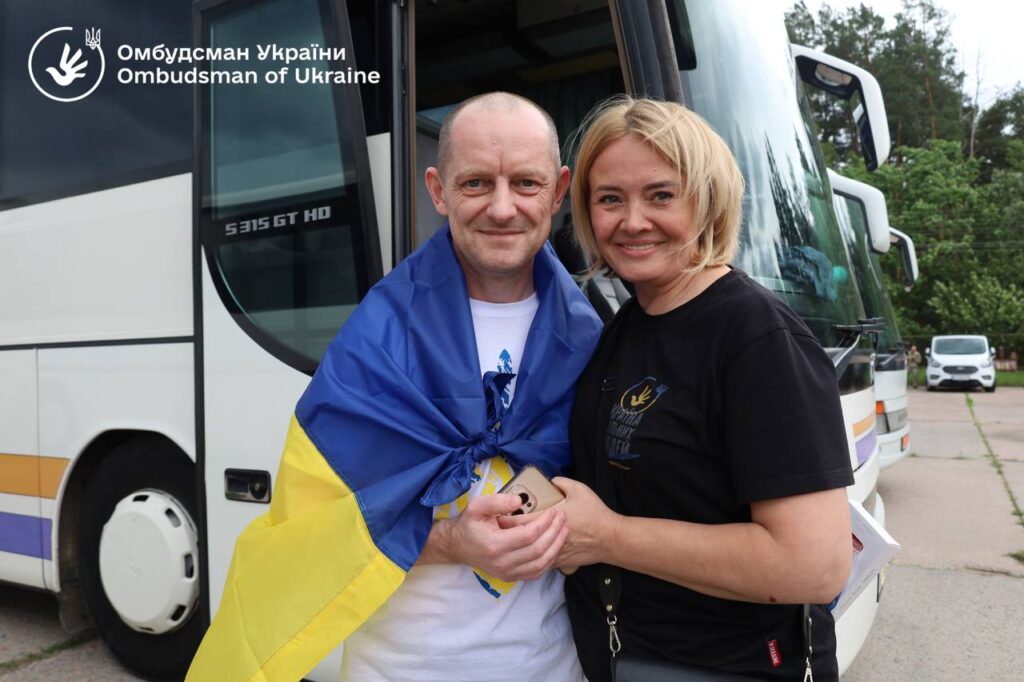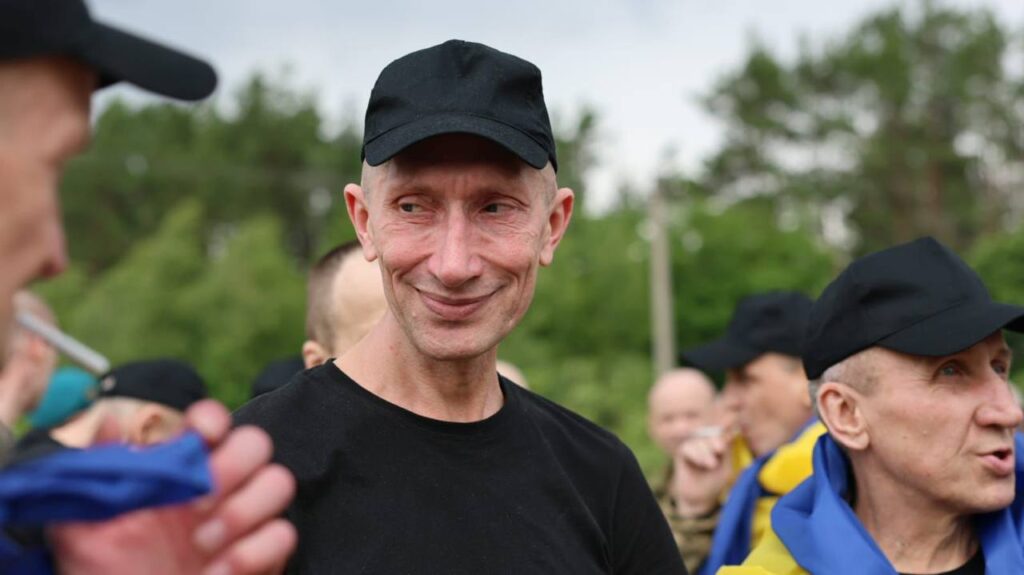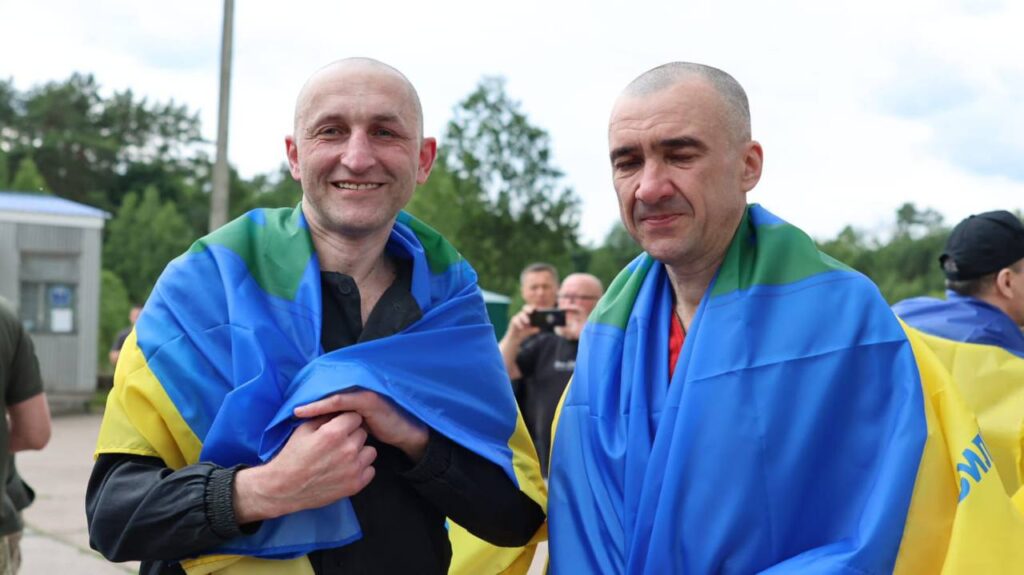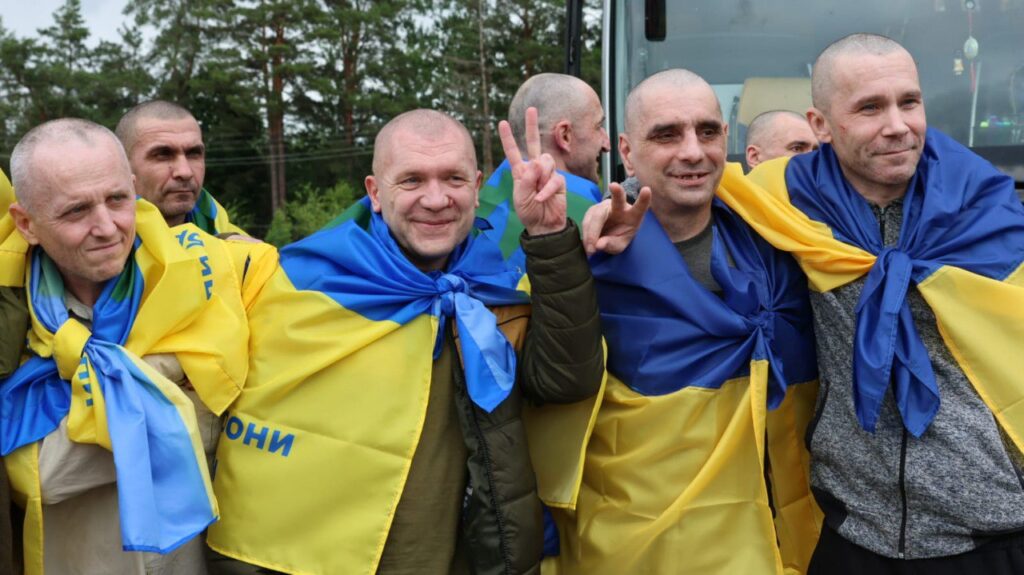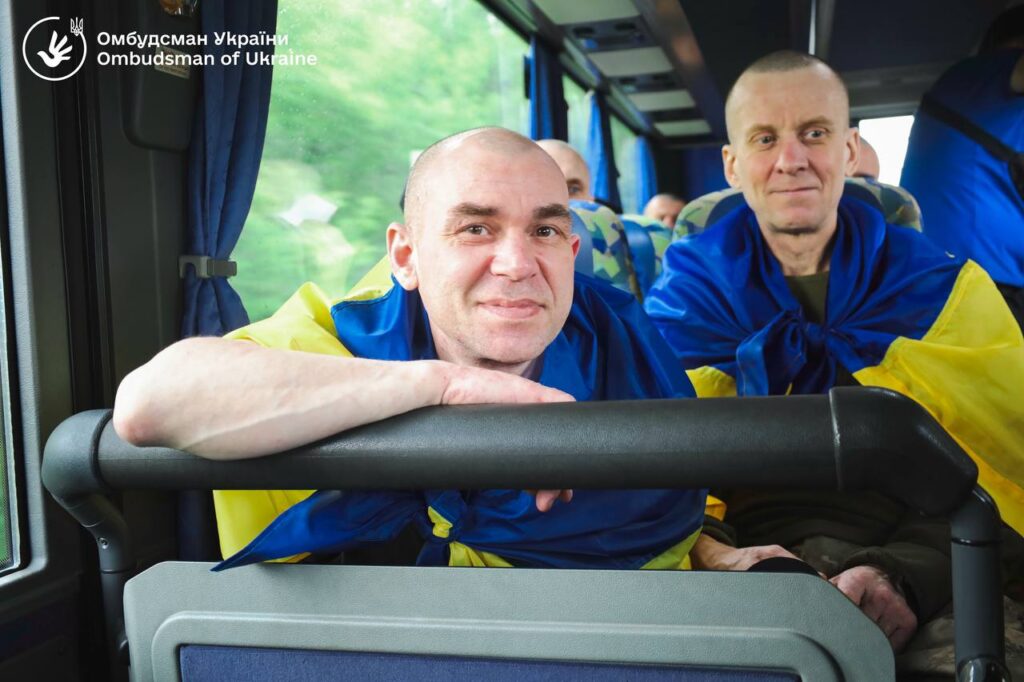United24: Ukrainian soldier tells how Russian surgeon burnt Glory to Russia on his body while in captivity

A Russian nurse approached the wounded Ukrainian prisoner of war lying in his hospital bed and told him not to worry. “When you get home, you can remove it or get a tattoo over it,” she said.
At first, the soldier had no idea what she was talking about until he lifted his head from the pillow and looked at his stomach. There, burned into his skin, were the words “Glory to Russia.”
On 28 June, United24 released a YouTube interview with the soldier himself. Andrii, a paratrooper from Ukraine’s 79th Air Assault Brigade, was exchanged in May as a result of Istanbul negotiations that did not, however, yield a ceasefire.
Ukrainian serviceman, who was captured following severe combat injuries, described systematic torture during more than 15 months in Russian captivity and detailed how a Russian surgeon branded the inscription onto his body using medical equipment during surgery.

Doctor’s desperate act: Breaking medical ethics to show world Russia’s torture of Ukrainian POWs
He asked Russian captors to “finish him off”
Andrii’s unit faced relentless Russian assaults in eastern Ukraine. His position had been reduced to rubble—”not even tree stumps” remained, he said. They held one dugout with an entrance barely two meters wide, repelling two or three attacks daily. Then came the grenade that changed everything.
“I heard the sound of a grenade pin being pulled. It landed right next to me,” he shared. “I knew that that was it. There was an explosion, then silence and darkness.”

He woke up paralyzed from the waist down, convinced his legs were gone. When he reached down, they were still there but completely numb. Russian soldiers were already dragging him from the dugout. They seemed surprised he survived—no pulse, no breathing, no heartbeat when they first checked. The blast also shredded his buttock and caused severe internal injuries that would require multiple surgeries. But he was alive, barely, and now their prisoner.
Unable to walk, he was carried on a stretcher to Russian positions. That’s when his 15 months of captivity began and when he repeatedly asked his captors to “finish me off” rather than face what lay ahead.
Andrii said that Russian forces brought him to a hospital after interrogation and torture that included electric shocks applied directly to his open wounds. Medical staff operated on him while he was unconscious, and he only discovered the marking a week later when transferred to a regular hospital room.
“I had no idea what she was talking about. I lifted my head from a pillow just to look at my stomach. And there it was. ‘Glory to Russia,'” he said in the interview. “As far as I know, it was burned to my skin with a medical cautery tool.”
When asked who performed the procedure, he identified the surgeon who had operated on him. “It was the surgeon who operated on me. The very first one,” he stated.
Ukrainian doctors are now working to eraze what the Russian surgeon left behind. The “Unburnt” national program provides free treatment for war-related injuries and has begun procedures to remove the inscription.
The process started with polynucleotide injections to stimulate tissue regeneration. Maksym Turkevych, the program’s director, expects the multi-stage treatment will leave only minimal traces visible within months.
But this case raises bigger questions about what’s happening to Ukrainian prisoners.
Systematic torture in Russian captivity
The soldier’s account aligns with documented patterns of abuse against Ukrainian prisoners of war. According to Ukraine’s Security Service, over 96,000 criminal proceedings have been opened under Article 438 of the Criminal Code since the full-scale invasion began in 2022, representing war crimes cases.
Andrii described repeated torture sessions that included electric shocks applied to wounds, beatings with filled water bottles, and use of devices called “tapik” – old phones with electrical wires that deliver increasing levels of electric current based on numbers dialed.
“They ripped off the bandage and started electrocuting me right there, directly into the wound,” he said. “That went on for about 40 minutes.”
Why does Russia do this systematic torture of POWs? The pattern suggests coordinated policy rather than isolated incidents. Prisoners held in different facilities report identical torture methods and injuries.

NYT: Russia tortures American teacher due to his nationality. He was accused of allegedly fighting for Ukraine
What kept him alive?
The soldier lost 16 kilograms (35 lbs) during captivity—dropping from 90 (198 lbs) to 74 (163 lbs) kilograms. He spent months in overcrowded prison cells designed for six people but holding twelve.
Guards forced prisoners to memorize the Russian national anthem. Those who failed faced severe beatings.
“The guards would come in and ask us to recite the Russian national anthem. That was mandatory everywhere in hospitals, in prisons,” he said. “Those who didn’t know it, they got beaten severely. Beaten until they couldn’t get up.”
What sustained him? A promise to his nine-year-old daughter.
“I promised her that no matter what condition I’d be in, even without arms, without legs, I’d still come back,” he said. “Every single day, I kept telling myself, I will come back.”
Andrii was exchanged on 22 May 2025 after spending months in a Russian prison colony. He described the moment of crossing back into Ukrainian territory as overwhelming relief after prolonged uncertainty.
“We could finally smoke, drink some water, take photos. That’s when it really started to feel easier, like a huge weight lifted,” he said.
His reunion with his nine-year-old daughter proved particularly emotional. The child initially did not recognize her father, who had lost so much weight.
“At first, she didn’t recognize me, but I recognized her right away. She’s grown so much. She looks older now,” he explained.
He wants to return to fighting
Andrii wants to return to military service. That depends on upcoming surgeries and whether doctors clear him for combat duties, such as carrying heavy loads and wearing body armor.
His photos that went viral and his testimony represent evidence of systematic Russian war crimes, especially in captivity. While Ukrainian prosecutors are collecting and building these cases, the challenge, however, lies in holding perpetrators accountable while the war continues and they remain safely in Russia.
For now, Ukrainian doctors work to erase what Russian surgeons burned into Andrii’s skin. The inscription will fade. The evidence of what happened will not.
In June 2025, Ukraine also opened its first mental health facility specifically for released prisoners of war and torture survivors. The Saint Leo the Great Mental Health Center in Lviv has specialized therapy spaces and art spaces designed to help people recover from captivity trauma.
The facility expects to serve around 1,000 patients annually. Rather than resembling a hospital, the 17 patient rooms look like residential spaces. There’s an art therapy building with pottery workshops and studios where survivors can weave, sing, or make music.
